Remembering Prof. Ranjit Kumar Ray.
Prof (Dr) Nil Ratan Bandyopadhyay, 1975 Metallurgical Engineering, and
Shyam Adhikari, 1974 Metallurgical Engineering,
Editorial Introductuion:
The Sahityika Editorial team received two short biographies of our Late Professor Dr. Ranjit Kumar Roy.
Both the authors: Prof (Dr) Nil Ratan Bandyopadhyay (1975) and Shyam Adhikari (1974)
who were the students of Professor Ray during ‘70s, wrote almost the same.
So, the Sahityika Editorial team composed the final article combining their respective contents
and made it one under their joint names.
Recently, Prof. (Dr.) Ranjit Kumar Ray left for his heavenly abode creating a vacuum in the sphere of Metallurgical Engineering, its teaching, research and industrial consultancy. As a mark of our respect, we wish to pen down few words about the towering educationist who was a pioneer in his own subject and earned fame nationally and internationally.
Ranjit Kumar Ray was born on 10th July 1942 at Comilla, the then British East Bengal (Now Bangladesh). Like millions of Bengali Hindus of East Bengal, his family was also forced to flee into West Bengal after partition of India, and they could settle in Howrah city. He passed School Final Examination in the year 1958 from the Howrah Zilla School, securing 3rd position in merit in West Bengal School Board. After Intermediate Science from Presidency College, Kolkata in 1960, he took admission in Bengal Engineering College Shibpur, laying the foundation of an illustrious academic career. He completed his graduation (BE) in 1964 with 3rd position, Masters (ME) in 1966 with Gold Medal (1st position), His pursuit of knowledge and excellence led him to earn two doctoral degrees: first in the year 1973 from Calcutta University under the guidance of renowned Prof. A.K. Seal, and then in the same year in Physical Metallurgy and Science of Materials from the prestigious Birmingham University in the United Kingdom, supported by the Nehru Cambridge Fellowship.
After completion of Master’s, Prof. Ranjit Kumar Ray joined his alma mater, i.e. the faculty of Metallurgical Engineering at Bengal Engineering College, Shibpur in the year 1966 and continued for 11 years, then followed by teaching at IIT Kanpur for another 28 years till 2004, the year of his retirement. This was followed by a stint of more than 10 years in the R&D Division of Tata Steel, Jamshedpur as a Visiting Scientist. During 2014 till 2019, he came back to his Alma Mater as a Visiting Professor in Dr.MN Dastur School of Materials Science and Engineering of IIEST Shibpur.
He is rightly regarded as the “Father of Crystallographic Texture Research in India,” a field where his contributions have been path-breaking and widely respected. His scholarly work includes numerous original research papers, acclaimed books, and significant scientific contributions that have influenced both national and international metallurgical research. His dedication to education and research remained unwavering throughout his life. Even after retirement, he continued to actively engage in academic pursuits, mentoring young minds and contributing to scientific advancements until his last days.
Prof. Ray’s academic achievements earned him numerous awards and honors, reflecting the global recognition of his work. He was a recipient of more than one and half dozens of national and international awards and honours, notably
• Calcutta Univ. Gold Medal (1966)
• Kamani Gold Medal of the IIM (1968)
• Commonwealth Scholarship (1970-73)
• Premchand Roychand Scholarship, Calcutta University (1976)
• Alexander von Humboldt Fellowship (1981-83)
• Mouat Medal of Calcutta University (1983)
• International Scientific Exchange Award, Canada (1988-89)
• Distinguished Alumnus Award, B.E. College (1989)
• Best Metallurgists’ Award, Government of India (1991)
• Binani Gold Medal of IIM (1992)
• B.R. Nijhawan Award of the National Metallurgical Laboratory (1994)
• Special Invitation from the Alexander von Humboldt Foundation, Germany (1997)
• Elected member of the International Committee on Textures of Materials (ICOTOM)
• Elected Fellow of the Indian National Academy of Engineering (1999)
• G.D. Birla Gold Medal of the Indian Institute of Metals (2001)
• Elected Fellow of the Indian Institute of Metals (2001)
His several fellowships were, namely SERC Fellowship Canada, JSPS Senior Fellowship Japan, and fellowships to Australia, Brazil, France and Singapore. He was also a member of the International Committee of Textures of Materials.
Prof. Ray was Visiting Professor in many internationally prestigious universities / research laboratories, a few notables are
• AICTE-INAE Distinguished Visiting Professor, SRMIST Chennai and CMRIT Bengaluru
• Carnegie-Mellon University,
• University of Pittsburgh,
• University of Michigan in Ann Arbor,
• Michigan State University at East Lansing,
• University of Virginia at Charlottesville,
• University of Illinois in Urbana-Champaign, Georgia
• Institute of Technology in Atlanta,
• Naval Research Laboratory in Washington DC,
• NIST in Maryland (all in the US), Birmingham
• Aston University in UK,
• Ecole de Mines, and University of Metz in France,
• Aachen, Clausthal and Dresden Universities in Germany,
• Institute of Metals Research Stockholm, Sweden,
• Riso National Laboratory Denmark,
• Univ of Delft in Netherlands,
• Ghent Univ in Belgium,
• Monash Univ in Australia,
• and a few more in Singapore, Brazil, Saudi Arabia and Japan.
Prof Ray pioneered the subject of Crystallographic Texture of Materials, both teaching and research in India. The International Conference on Textures of Materials was held during 30th June- 6th July 2024 in Metz France. A special commemorative symposium was held in Prof Ray’s name during that time to honor him and also to acknowledge his immense contribution to texture research. His initiation to texture study started during his PhD work in the University of Birmingham in 1970 and matured in the Technical University of Aachen in Germany while working with Prof K Luecke during those two years (1981-83) as Alexander von Humboldt fellow. Crystallographic texture of materials, like their microstructure, affect the properties significantly. Hence measurement of crystallographic texture is of paramount importance. He started texture measurements with a primitive goniometer in IIT Kanpur during late 1970’s and later developed precise methods for analysis and prediction of texture using Orientation Distribution Function. In 1970 another milestone research was recrystallization studies. He carried out in 1000KV High Voltage Electron Microscope recrystallization experiments and came out with clearest confirmation of nucleation from subgrains present in the deformed matrix. He also did path breaking research for development of appropriate textures in interstitial free (IF) and advanced high strength steels (AHSS).
Yet, beyond his scholarly brilliance, Prof. Ray was cherished for his exceptional teaching, student-friendly approach, and endearing personality. He guded 14 PhD students and a number of post graduation and graduation research projects. Google Scholar Citation shows his 230 authored papers were cited 2063 times by other researchers, including one 1994 paper had 348 citations, an incredible number normally reserved for a scientist of extraordinary caliber. Needless to say, he was immensely popular among his students, known for his clarity in teaching, patience, and his ever-smiling, approachable demeanor. It is often said, and truly so, that Prof. Ray never had an enemy — his humility, kindness, and willingness to help others endeared him to all. Prof Ray actually never retired from teaching and advising researchers in his field. Just 3 months back on 19th March 2025, he gave his last lecture in a seminar at IIT Kanpur, “A Century of Texture Research: Historical Perspective and A Personal Journey”.
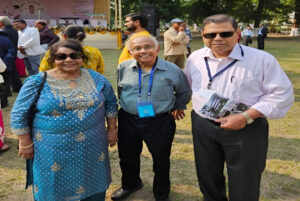
It is our good fortune to be Ranjit Da’s (we all lovingly called him) student during my B E College days, 1973-74. Bye, Ranjit da, wherever you are now, your smiling face and your name will always remain etched in the minds of all your students.
Our distinguished alumnus passed away peacefully at Harvard University Medical Hospital in Boston, USA on 24th July 2025, after suffering a brief illness due to lung infection. He was visiting his younger daughter (her husband is a doctor at Harvard University Medical School) in Boston along with his wife Mrs Chabi Ray. His sudden death on 24th July 2025 is an irreparable loss to the academic community, his students, colleagues, and countless admirers. The void he leaves behind can never be filled. His life, however, remains an inspiration — a shining example of scholarly excellence, integrity, and compassion.
Research Areas & Contributions
• Renowned as the Father of Crystallographic Texture in India
• Research focus: crystallographic textures, advanced high strength & micro alloyed steels, polymer nanocomposites, biomaterials, water purification nanotechnologies
Co-editor/author of key books:
• Textures in Materials Research (1999)
• Materials for Third Millennium.
• Contributed to Crystallographic Texture of Materials (Springer, 2014)
Publications:
• Published dozens of high-impact research papers: in Scripta Materialia, *Acta Materillia
• Guided numerous graduate students at IIT Kanpur, IIEST, and Tata Steel
• Designed and lectured advanced courses, including NPTEL course on *X‑ray Crystallography & Diffraction*
Awards & Honors
• Commonwealth Scholarship, Ph.D. 1970–73; with Alexander von Humboldt Fellowship
• Calcutta University Gold Medal (1966), Kamani Gold Medal (1968), Premchand Raychand Scholarship (1976)
• Mouat Medal (1983)
• Best Metallurgist–Govt. of India (1991)
• Binani Gold Meda* (1992)
• B.R. Nijhawan Award (1994)
• G.D. Birla Gold Medal, Indian Institute of Metals (2001); elected Fellow of INAE & IIM (1999, 2001);
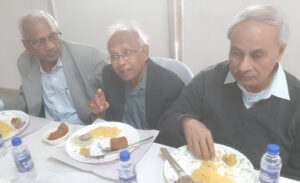
Ref:
** https://scholar.google.co.in/citations?user=3DqfQ5wAAAAJ&hl=en
** https://oldwww.iiests.ac.in/index.php/about-ranjit-kumar-ray
A teacher is a compass that activates the magnets of
curiosity, knowledge, and wisdom in the pupils.
– Ever Garrison
*******
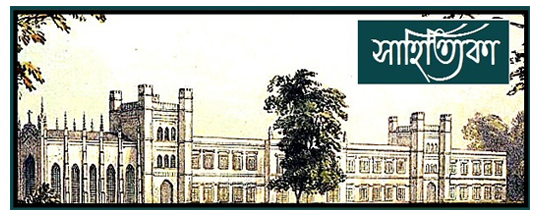
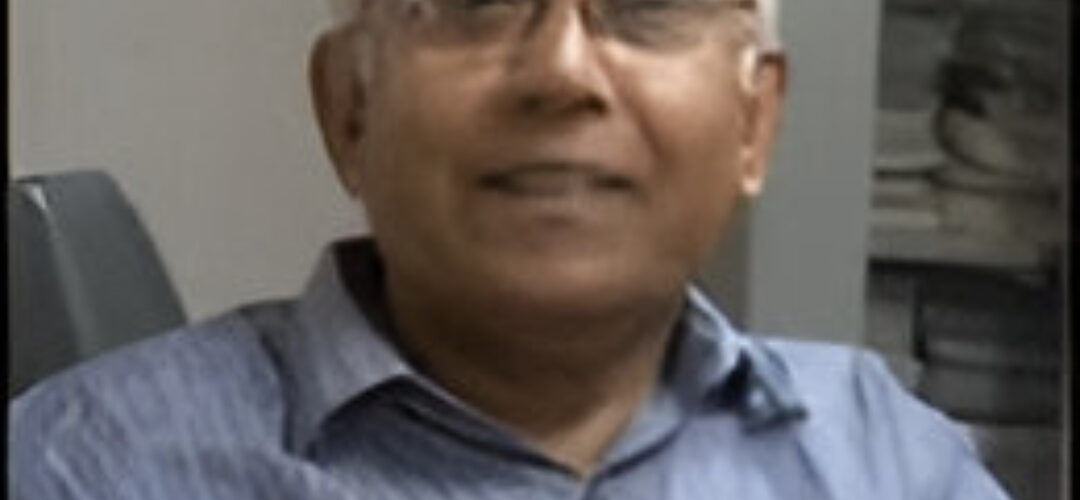

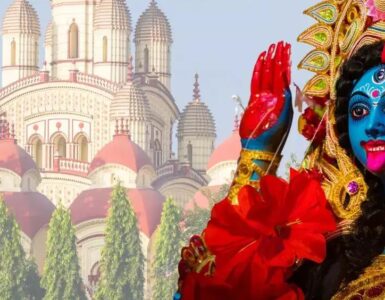
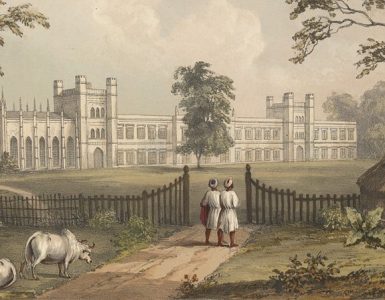









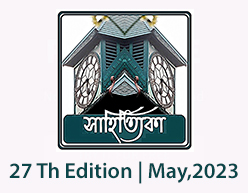
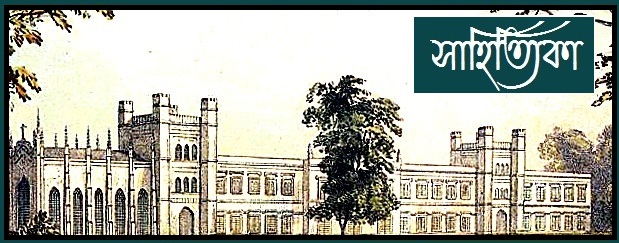
Add comment